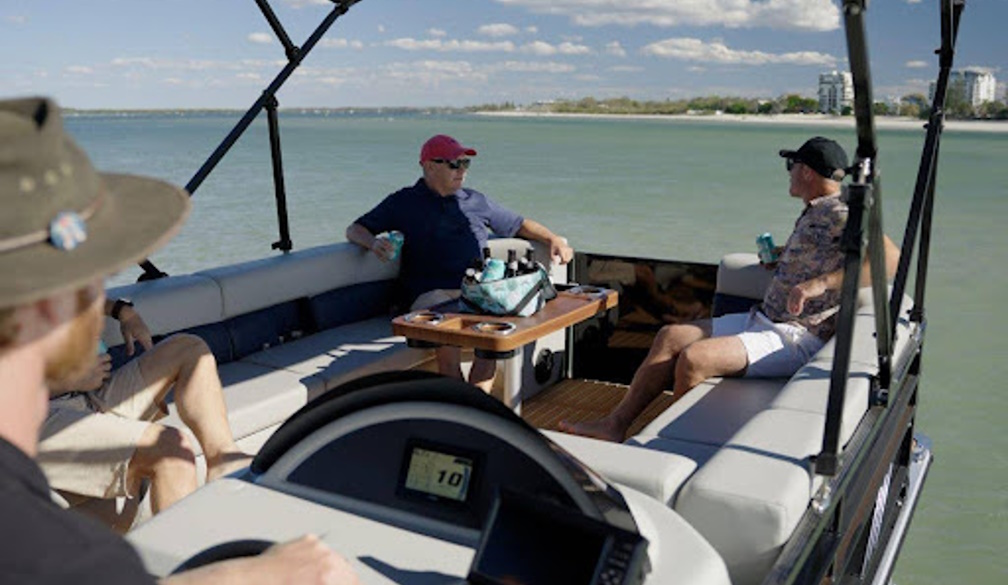A century after its discovery, scientists capture first confirmed footage of a colossal squid in the deep
- Written by Kat Bolstad, Associate professor, Auckland University of Technology
The colossal squid was first described in 1925 based on specimens from the stomach of a commercially hunted sperm whale. A century later, an international voyage captured the first confirmed video of this species in its natural habitat – a 30-centimetre juvenile, at a depth of 600 metres near the South Sandwich Islands.
Colossal squid can grow up to seven metres and weigh as much as 500 kilograms, making them the heaviest invertebrate on the planet. But little is known about their life cycle.
The first sighting of a juvenile colossal squid in its natural environment. Credit: Schmidt Ocean Institute.The footage of a young colossal squid in the water column was a serendipitous sighting, as many deep-sea squid observations are.
It was seen during the live “divestream” feed of a remotely operated vehicle during the Schmidt Ocean Institute and Ocean Census partner expedition searching for new deep-sea species and habitats in the far south Atlantic, mostly focusing on the seafloor.
Those tuned into the stream had the remarkable experience of seeing a live colossal squid in its deep-sea home, although its identity was not confirmed until the high-definition footage could be reviewed later.
Predators such as whales and seabirds are still one of our best sources of information about the colossal squid (Mesonychoteuthis hamiltoni) because they are much better at finding it than we are.
This partially explains why we have only just filmed this species in its natural habitat. Not only do these animals live in an enormous, dark and three-dimensional environment, they are also probably actively avoiding us.
Most of our deep-sea exploration equipment is large, noisy and uses bright lights if we are trying to film animals. But the colossal squid can detect and avoid diving sperm whales, which probably produce a strong light signal as they swim down and disturb bioluminescent animals.
The squid best able to avoid such predators have been passing on their genes for millions of years. This leaves us with a current population of visually acute, likely light-avoiding animals, well capable of detecting a light signal from many metres away.
Delicate beauty of deep-sea animals
The colossal squid is part of the “glass” squid family (Cranchiidae). Three known glass squid species are found in the Antarctic ocean, but it can be difficult to distinguish them on camera.
Researchers from the organisation Kolossal, aiming to film the colossal squid, observed a similarly sized glass squid during their fourth Antarctic mission in 2023. But since the characteristic features needed to identify a colossal squid – hooks on the ends of the two long tentacles and in the middle of each of the eight shorter arms – weren’t clearly visible, its exact identity remains unconfirmed.
In the Schmidt Ocean Institute footage, the mid-arm hooks are visible. And for this young individual, the resemblance to other glass squids is also clear. With age and size, colossal squid likely lose their transparent appearance and become much more of an anomaly within the family.
While many will be amused by the idea of a “small colossal” squid, this footage showcases a beauty shared by many deep-sea animals, in contrast to the monster hype and “stuff of nightmares” click-bait titles we see all too often.
This colossal squid looks like a delicate glass sculpture, with fins of such fine musculature they are barely visible. It has shining iridescent eyes and graceful arms fanned out from the head.
At full size, the colossal squid may be a formidable predator, with its stout arms and array of sharp hooks, able to tackle two-metre-long toothfish. But in our first confirmed view of it at home in the deep sea, we can marvel at the elegance of this animal, thriving in an environment where humans require so much technology even to visit remotely.
Stranger than science fiction
Until recently, few people were able to take part in deep-sea exploration. But now, anyone with an internet connection can be “in the room” while we explore these habitats and observe animals for the first time.
It’s hard to overstate the importance of the deep sea. It holds hundreds of thousands of undiscovered species, it is probably where life on Earth started, and it makes up 95% of the available living space on our planet.
It has animals more splendid and strange than our most creative science fiction imaginings. This includes squids that start life looking like small light bulbs and then grow into true giants; colonies of individuals living together with each contributing to the group’s success; animals where males (often parasitic) are orders of magnitude smaller than females.
This first confirmed sighting of a colossal squid inspires and reminds us how much we have left to learn.
The expedition that captured the footage of the colossal squid was a collaboration between the Schmidt Ocean Institute, the Nippon Foundation-NEKTON Ocean Census, and GoSouth (a joint project between the University of Plymouth, GEOMAR Helmholtz Centre for Ocean Research and the British Antarctic Survey).
Authors: Kat Bolstad, Associate professor, Auckland University of Technology


















